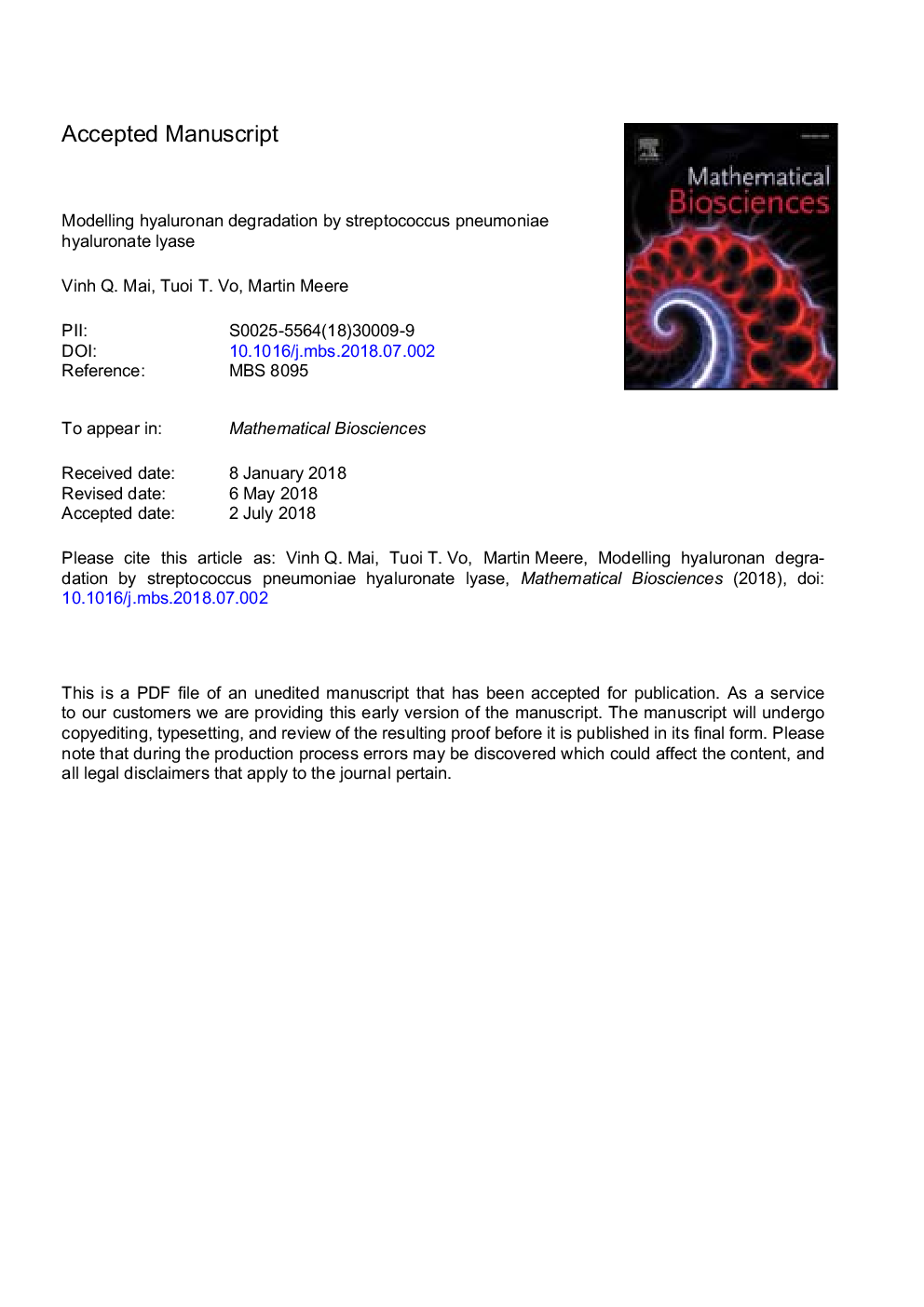| Article ID | Journal | Published Year | Pages | File Type |
|---|---|---|---|---|
| 8876961 | Mathematical Biosciences | 2018 | 31 Pages |
Abstract
Hyaluronic acid (Hyaluronan) is a linear, high molecular weight polysaccharide that forms an important component of the extracellular matrix. It is an excellent biomaterial, and it is increasingly being used in biotechnology, biomedical applications, and drug delivery. Polymer chains of hyaluronan occur in many different lengths in nature, and can be as large as multiples of ten thousand. Since the biological function of a hyaluronan chain often depends on its molecular weight, it is of value for applications to develop reliable quantitative descriptions of the degradation processes of hyaluronan. In particular, the development of such models should assist with the rational design of production processes to create polymer chains in a given molecular weight category for a specific application. In this paper, we propose a new mathematical model for the degradation of hyaluronan by the enzyme streptococcus pneumoniae hyaluronate lyase. The model is based on a processive kinetic mechanism and consists of a coupled system of nonlinear ordinary differential equations for the species of interest. The model parameters are estimated using published experimental data, and good agreement between theory and experiment is found. Numerical experimentation and a Sobol global sensitivity analysis reveal that the key model parameters are the initial enzyme concentration and the rate constants for enzyme adsorption and catalysis.
Keywords
Related Topics
Life Sciences
Agricultural and Biological Sciences
Agricultural and Biological Sciences (General)
Authors
Vinh Q. Mai, Tuoi T. Vo, Martin Meere,
